
Related
Guests
- Mark Dannercontributor to the New York Review of Books. He is a professor of journalism at the University of California at Berkeley and a professor of human rights and journalism at Bard College. He is the author of Torture and Truth.
The International Committee of the Red Cross concluded in a secret report two years ago that the Bush administration’s treatment of prisoners “constituted torture” in violation of the Geneva Conventions. The findings were based on interviews with prisoners once held in the CIA’s secret black sites. Author and journalist Mark Danner broke the story when he published extensive excerpts of the report in the New York Review of Books. The Red Cross said the fourteen prisoners held in the CIA prisons gave remarkably uniform accounts of abuse that included beatings, sleep deprivation, extreme temperatures and, in some cases, waterboarding. [includes rush transcript]
Transcript
AMY GOODMAN: We move on to a breaking story, the International Committee of the Red Cross concluding in a secret report, yes, it was two years ago that the Bush administration’s treatment of prisoners “constituted torture” in violation of the Geneva Conventions — the findings based on interviews with prisoners once held in the CIA’s secret black sites.
But the revelation was just made this weekend when the author and journalist Mark Danner published extensive excerpts of the Red Cross report in the New York Review of Books. In the article, Danner quotes from a speech President Bush delivered from the White House on September 6th, 2006. Danner writes, the speech is “perhaps the only historic speech [Bush] ever gave.” In it, Bush admitted the US was using what he called “an alternative set of procedures” to interrogate terrorism suspects.
PRESIDENT GEORGE W. BUSH: The CIA used an alternative set of procedures. These procedures were designed to be safe, to comply with our laws, our Constitution and our treaty obligations. The Department of Justice reviewed the authorized methods extensively and determined them to be lawful. I cannot describe the specific methods used. I think you understand why. If I did, it would help the terrorists learn how to resist questioning and to keep information from us that we need to prevent new attacks on our country. But I can say the procedures were tough, and they were safe and lawful and necessary. I want to be absolutely clear with our people and the world: the United States does not torture. It’s against our laws, and it’s against our values. I have not authorized it, and I will not authorize it.
AMY GOODMAN: President Bush in 2006.
Well, yesterday, I spoke to Mark Danner about the secret Red Cross report he obtained and what it reveals about the Bush administration’s treatment of prisoners. Danner is a contributor to the New York Review of Books, a professor of journalism at University of California, Berkeley, author of Torture and Truth. He began by talking about the significance of that speech by President Bush.
MARK DANNER: This was a very significant speech, not least because the President of the United States, for the first time in the history of the country, was discussing interrogation techniques with the American people and techniques which the International Committee of the Red Cross report shows and says were torture.
The report — you know, in the New York Review article, I make this speech from the President a kind of counterpoint to the information contained in the International Committee of the Red Cross report, because at the same — on the same day that the President was talking about these procedures, he was also announcing that the fourteen high-value detainees, “the worst of the worst,” as Donald Rumsfeld called them, were being transferred from this secret world of the black sites to Guantanamo. And at Guantanamo, they would, in the days after the President’s speech, talk to representatives of the International Committee of the Red Cross, whose job it is, among other things, to supervise the treatment of the detainees, of prisoners of war. That is the legally constituted responsibility of the ICRC.
So these representatives from Geneva came and interviewed — from the Geneva organization of the ICRC, came and interviewed the detainees, interviewed them separately in long interviews by professionals, and in this report told their stories. There are long quotations, long verbatim transcripts of the descriptions of these detainees of their treatment in American custody at these secret prisons.
And these reports have a rare authenticity and credibility for a number of reasons. The first is that they were taken by professionals over many days, people who are used to conducting these kinds of interviews with prisoners. Secondly, all of the detainees had been kept isolated. They had not been able to talk to one another since their captures, so they were not able to compare stories and make sure that they matched, create stories and so on, which makes fabrication extremely unlikely, if not impossible, as the ICRC says in their report. And finally, the report exists, not because it was supposed to be made public, but because it was transferred or sent to the American government, notably to the acting general counsel of the CIA. It was sent to this gentleman, Mr. John Rizzo, in February 2007. So it was not intended for public distribution. It was intended as a way for the ICRC to essentially tell the body in whose custody these detainees were, the Central Intelligence Agency, about their treatment and to strongly urge changing that treatment. So the ICRC’s judgment in this report, it seems to me, are compelling and authentic.
And the writers of the report say, with no equivocation, that the activities that they described “constitute torture” — that’s a quote, “constitute torture” — and also constitute cruel, inhuman and degrading treatment. There’s no equivocation. There’s no “it’s in the eye of the beholder.” There’s no “it depends on the definition.” None of that. They simply say it bluntly. And the people saying it are the people who are the legally constituted guardians, in effect, of the Geneva Conventions, which forbid torture of prisoners and forbid cruel, inhuman and degrading treatment, as does, I should say, the Convention Against Torture of 1984, which the United States — to which the United States is a signatory, as does the War Crimes Act of 1996. All of these things make that activity illegal.
So, I think anyone who looks at the report or reads the extracts in the New York Review of Books article can have no doubt, first of all, that the United States tortured prisoners and, secondly, that this activity was illegal and constituted a breach of international and domestic law.
AMY GOODMAN: So, Mark Danner, did President Bush lie?
MARK DANNER: Yes. Yeah, he did.
You know, I should say, Amy, presidents lie. There are a number of, you know, fairly compelling historical examples of it. One is President Eisenhower with Gary Francis —- Francis Gary Powers, the U-2 pilot who was shot down over the Soviet Union. President Eisenhower came out and bluntly said, “No, no, no, this didn’t happen,” or “This isn’t our pilot,” or “We didn’t do it.” And he was exposed. He was lying. He was doing it for what he thought were genuine national security reasons. President Nixon lied on a number of very well-documented occasions.
And I think, on the repeated occasions that President George W. Bush said, “We do not torture. I have not ordered it. I will not order it,” yes, I think he was lying. I think he, from what we can tell, did it for reasons that he thought were important to the country. I think he ordered these things for reasons that he thought were important to the country. I don’t think this was out of sadism or evil or anything else. I think that the President believed he was acting in the best interests of the citizens of the United States. But I do think that it’s simply unequivocal that he said things that were not true, and he knowingly said that they weren’t true.
You know, I suppose one could argue that he really believed what he said. You know, but at a certain point, as children find out at a very young age, courtesy of their parents, simply believing something doesn’t make it true. You know, these things happen in objective reality. They happen as a result of orders high up in the administration. These activities were monitored very closely as they happened, not only by CIA officials in Langley, Virginia, who were in close contact with the interrogators from the beginning and hourly, but by officials across the river in the White House. There’s a clear record of briefings by the then-CIA Director George Tenet of the Principals Committee in the White House. The Principals Committee includes the Vice President, then Dick Cheney; the then-Secretary of State Colin Powell; then-Secretary of Defense Donald Rumsfeld; then-National Security Adviser Condoleezza Rice; the then-Attorney General of the United States, the highest law enforcement officer of the United States, John Ashcroft. All of these people, as a matter of record, were being briefed on these particular techniques that were being used on detainees and that are set out, very graphically, I might add, in the report and quoted in the New York Review of Books article. So -—
AMY GOODMAN: Would all of these people have seen this report?
MARK DANNER: You know, I couldn’t say about that. All I know is that the report was transmitted directly to the acting general counsel of the CIA. What its distribution was within the government was, I don’t know.
But I would say that these officials, some of whom, of course, by the time the report, the actual report, was transmitted, were no longer in the Bush administration, such as Colin Powell and Donald Rumsfeld, these people, as I just suggested, had a much more direct source of information: they were being briefed in real time by the director of the CIA, George Tenet, who, from all reports, was concerned about his own exposure and the exposure of his agency to legal penalties for this activity. And I think one can surmise that one reason why he kept the principals so closely briefed was that he didn’t want to be caught out and exposed for doing these things.
And you see this kind of indication of worry about legality up and down the line. I mean, it’s a matter of record now that the CIA destroyed no less than ninety-two video recordings of interrogations. And, you know, it’s hard to believe that they did that for intelligence reasons. It seems likely that they did it because they feared that those recordings would be used in some way in a prosecution or an investigation. So, you know, not the least way that torture is problematical is that it causes a lot of problems within the bureaucracy. It causes a lot of leaks from people who object to the policy. They call up reporters. You get a lot of things in the press. And it also causes officials to do things that are manifestly against the interests of the government, like destroying videotapes that one would think, if these things were valuable interrogation sessions, had a lot of intelligence that probably shouldn’t have been destroyed. But they were destroyed for reasons extraneous to intelligence, that had to do with the fear of high officials that they would be exposed and prosecuted. So there are a lot of different ways that these activities are problematical, and not the least that they’re illegal, arguably immoral, politically damaging, but also practical — there are practical problems, such as the ones I just — the ones I just cited.
AMY GOODMAN: The power of your piece, Mark Danner, in the New York Review of Books is the men’s words themselves, the descriptions of the torture. Can you talk about who Abu Zubaydah is and what exactly he told the International Red Cross?
MARK DANNER: Well, Abu Zubaydah was captured on March 28th, 2002, in Faisalabad, Pakistan. The joint task force of special forces from the Pakistani army and from Pakistani intelligence, FBI agents, CIA agents, raided a series of safe houses simultaneously, and at one of them they found Abu Zubaydah, who actually ran up to the roof, tried to jump from one roof to another to escape. He was shot three times, very gravely wounded by AK-47 fire. The United States immediately took him to — first to a local hospital, and then they transported him to Lahore, a bigger hospital, Lahore, Pakistan. And George Tenet telephoned Johns Hopkins, had a trauma surgeon put aboard a private plane, sent immediately to Pakistan to try to save his life. They did save his life. He was then transported to a safe house, apparently in Thailand, where he was interrogated. And he’s really the first of these prisoners to be subjected to the “alternative” set of procedures, as the President called them. We have a long record of what was done to him.
He is, I should say, by the way, to answer your question — who was he? — he was, so far as we know, an official fairly high up in al-Qaeda. He had to do especially with logistics, with transporting people, ensuring that they were in particular camps, helping them with travel, knowing where they were placed in cells. There is, like everything having to do with al-Qaeda, a great deal of controversy about what his actual role and what his actual importance was. The President described him as a leading figure in al-Qaeda, extremely important. Many other prominent journalists, notably Ron Suskind in his book The One Percent Doctrine, dispute this and say that, in fact, he was a man with mental problems who was not taken particularly seriously within the organization.
And what ensued was a kind of struggle between the FBI and the CIA about methods. The FBI wanted to use more conventional interrogation techniques, and they did indeed use those for a couple of weeks and apparently got significant information. At the same time, the CIA wanted to believe that he was lying, that he was not giving up the information he should have been, and they pressed to use enhanced interrogations methods, what the President called the “alternative set of procedures.”
And in the New York Review piece, I detailed what these enhanced interrogation methods were, which began with sleep deprivation. He woke up strapped naked in a white room, very small white room, bright white light, music playing at a very high volume twenty-four hours a day. He was given no food, just given a liquid supplement that he could drink. He was strapped to a bed for the first several days, then moved to a chair, where he was shackled in place for three weeks. Music played, light continued, twenty-four hours a day. The room was kept very cold. One official who observed this said he kept turning blue, that the effect of the cold on this naked guy shackled in a chair. And he was kept awake, apparently, for the better part of three weeks and interrogated daily.
More intensive techniques were eventually used. These included use of cold water, again keeping him very cold, then beating him, punching him and slapping him. A towel was placed around his neck, and he was slammed repeatedly against the wall.
Two boxes, black boxes, were then moved in front of his cell. One of them was about three feet — excuse me, two feet by three feet by six feet high, so it had a kind of coffin shape, tall black box. The second was the same width and length, but about three feet, three-and-a-half feet tall, so a small black box. He was forced into these boxes, these tiny spaces, and kept in there. And when he came out the first time, he discovered that a piece of plywood had been affixed to the wall, apparently put there so he could be slammed against it without risk of serious injury.
He was later strapped down on a hospital gurney, as he describes it. The head was lowered, a cloth placed over his face, and water was poured over his face. This is what the CIA — or, excuse me, the ICRC report refers to in its chapter titled “Suffocation by Water.” The water was poured over his face. He describes this in depth, what happened. He seized up, gagging. This is waterboarding. And this was done on apparently five occasions. After a certain amount of time, he would be raised up on the gurney to a vertical position. He would then vomit. The thing would be lowered again, the cloth replaced and the water poured on again. This is described in the first person in the ICRC report, and I quote extensively in the piece in the New York Review of Books.
AMY GOODMAN: We’ll be back with Mark Danner in a minute.
[break]
AMY GOODMAN:
We continue with Mark Danner, professor of journalism at UC Berkeley. I asked him about his colleague at Berkeley, law professor John Yoo, now on leave at Chapman Law School in LA. Yoo is famous for the torture memo written when he worked for the Bush Justice Department, 2001 to 2003. This is Mark Danner’s response.
MARK DANNER:
There was great concern in the — after the attacks of 9/11 that techniques, these dramatic techniques, or this leaning forward of policy, would have a legal cover. That is, that officials, by undertaking some of these things, whether it’s warrantless wiretapping or enhanced interrogation, not be subject to prosecution. So it was a large part of the job of certain parts of the Justice Department to come up with legal opinions for the rest of the government that would give the reasoning for why these things that people formerly thought were illegal had suddenly become legal.
And John Yoo was a young lawyer, who had been a professor at Berkeley and now is again, and who was serving in the Justice Department’s Office of Legal Counsel, which is essentially kind of a small think tank within the Justice Department whose job it is to give opinions to the rest of the government, notably the White House, about how to interpret certain laws and statutes. John Yoo was a leading figure in coming up with new interpretations of the law, in order, in essence, to make these activities, heretofore thought to be illegal, legal.
And the story of the spring of 2002, leading right up to the summer, is conversations that were had among John Yoo, other Justice Department officials, and especially lawyers in the White House, including the White House counsel, Alberto Gonzales, who later went on to become Attorney General, of course; Timothy Flanagan; and, of course, David Addington, who was then the counsel of Vice President Dick Cheney — all got together and came up with a legal strategy that John Yoo wrote in what has now become known as the torture memo. It was signed by Jay Bybee, John Yoo’s boss at the time in the Justice Department, who is now, I should say, a federal judge here in the Ninth Circuit in California. And it was signed and dated August 1st, 2002. But by that time, Abu Zubaydah had been under interrogation in Thailand, we think, for a couple of months in one of these black sites. So these discussions had gone on, and it’s generally thought that a so-called green light was given by the lawyers to use these activities sometime in the early summer of 2002, probably after a White House meeting.
But the gist of the memo is a redefinition of torture. Your viewers will know that torture is illegal. It’s illegal according to American law. It’s made illegal in the War Crimes Act of 1996. It’s illegal according to the Convention Against Torture, to which the US is signatory. It’s illegal according to the Geneva Conventions of 1947. So it is — excuse me — many times illegal.
So, how do you do it as a government and say that it’s legal? And the answer to that question, at least as supplied by John Yoo and other Bush administration lawyers, was you redefine it. You say, “OK, torture is illegal, but what we’re about to do isn’t torture. Why? Because for something to be torture, it must cause pain so severe” — and I’m quoting now — “as to be equivalent to major organ failure or death.” That’s a quotation from this memorandum. And, of course, if that’s the test for torture, you can do an awful lot to somebody. Arguably, you can waterboard them and not — and argue that this is not equivalent to major organ failure or death.
So this memo was put together in the spring and summer of 2002. It was signed on August 1st, 2002. And it became the guiding opinion, until it was eventually withdrawn in late — I believe late 2004 or early 2005.
AMY GOODMAN:
Mark Danner, do you think your colleague, John Yoo, should be tried for war crimes or crimes against humanity?
MARK DANNER:
You know, Amy, that’s a very difficult question, and the honest answer that I can give you is I don’t know the specific answer to that specific question. What I do know is that there needs to be a process in the United States whereby, first, these matters are fully investigated by a credible body — I underline “credible” — in which there can be a public record made of what was done, when it was done, what techniques were used, who approved them, specifically, and — and I think this is extremely important — what was gained by them, because there have been extravagant assertions from President Bush on down that these techniques resulted in intelligence that protected the United States from imminent attacks. These assertions are much disputed. A lot people say they’re exaggerations. But the real truth of the matter is, we cannot say that for sure until we have a clear record.
But I would say that, you know, the Obama administration — there is evidence on some days that the President, the current President, and others, other high officials, would like these matters to go away. I don’t blame them. It interferes with their program. They want to look to the future, as President Obama says. But, you know, his Attorney General, Eric Holder, said in his confirmation hearings, quite bluntly, “Waterboarding is torture.” That’s a quote. We also know that the former Vice President, Dick Cheney, the former CIA director, Mr. Hayden, explicitly said that prisoners were waterboarded. Prisoners under their control were waterboarded. We know about three of them. We now have the Red Cross report describing that waterboarding. Well, there’s a contradiction there that the country has to deal with. If it’s illegal and it was done, what exactly are we going to do about it?
AMY GOODMAN:
Mark Danner, hours after you published excerpts of the Red Cross report, former Vice President Dick Cheney appeared on CNN. He was asked whether he believed President Obama was making Americans less safe by abandoning some of the Bush administration’s, quote, “counterterrorism techniques.”
DICK CHENEY: I think those programs were absolutely essential to the success we enjoyed of being able to collect the intelligence that let us defeat all further attempts to launch attacks against the United States since 9/11. I think that’s a great success story. It was done legally. It was done in accordance with our constitutional practices and principles. President Obama campaigned against it all across the country. And now he’s making some choices that, in my mind, will in fact raise the risk to the American people of another attack.
AMY GOODMAN:
Mark Danner, your response?
MARK DANNER:
Well, first of all, one should say that the Vice President has said this repeatedly. That wasn’t the first time he said it. He said it repeatedly during the closing days of the administration. He was quoted as saying it in politico.com shortly after President Obama’s inauguration, and now he repeats it again. It’s clear there — first of all, I think he believes this. And, you know, Vice President Cheney, whatever else you can say about him, seems to be rather forthright when he talks about these issues in public. He sets it out very clearly, as clearly as Eric Holder’s statement that waterboarding is torture. We have two absolutely opposite views.
The second thing one can say is there’s a political aspect to this, which I alluded to earlier, which again is very clear, that the former Republican Vice President is laying down a kind of marker, saying, “OK, you can get rid of these techniques, fine, but if there’s another attack, we’re going to be in a position not only to claim that you are responsible for it, having gotten rid of these techniques that protected the country, that other attack will in effect prove that what we did was necessary.” That is, there is an exculpatory element in that argument, in saying, you know, what we had to do was necessary; another attack will prove it’s necessary, because it will come after you’ve eliminated these techniques. And I think it’s important to underline that.
You know, as I describe in the New York Review piece, there was a phrase that went around in the days after 9/11: “The gloves are coming off. The gloves are coming off.” It originally came, I think, from Cofer Black, who’s a CIA counterterrorism official, who said it before a Senate committee. And it’s, to me, a fascinating phrase, and it’s so simple that you almost miss its significance. The implication, of course, is that the gloves were on, that in some way the constitutional and legal protections that are part of the American system constitute kind of gloves that make it impossible, the implication is, for the United States to protect itself from the threats it faces.
And there’s a long history to this. You know, Dick Cheney was chief of staff under Gerald Ford. A very young man, he was a very high official in the Nixon and Ford administrations, as was his colleague Donald Rumsfeld, who was then his mentor during the early and mid-’70s. And that was the time of Watergate. That was the time when the Nixon administration was crumbling all around them. And one of the consequences was — and this, of course, came from Vietnam as much as anything, the defeat in Vietnam — was an investigation of the CIA that was led by Senator Frank Church of Idaho, the Church Committee, also the Pike Committee at the same time, which ferreted out and made public a lot of CIA wrongdoing, including attempts at assassinations, warrantless wiretapping domestically and abroad, and so on. These were made public, and there were legal consequences. The Congress passed various laws, including laws imposing on the President a requirement that if he was going to launch covert operations there had to be a finding, an explicit presidential decision, which made “deniability,” quote/unquote, impossible, also FISA, the Foreign Intelligence Surveillance Act, which was passed under Carter, but was a consequence of this era.
Now, those laws and many others you could name, which came out of the Church Committee and the Watergate era, were the very laws that Dick Cheney, Donald Rumsfeld and others in the administration in effect circumvented after 9/11. So there’s a rather sophisticated and historically rich narrative going on here that the Vice President — former Vice President is setting out before the public. And I think it’s important to examine that. His words are, I think, very important, and they shape a kind of political worldview.
AMY GOODMAN:
Mark, we only have a minute, and I wanted your conclusions on torture.
MARK DANNER:
Yeah.
AMY GOODMAN:
One, is it effective in the way Vice President Cheney talks about it? I mean, the fact that you get this testimony thrown out, you can’t even use it, when there’s torture, let alone whether you get accurate information. And what you think it means for a democratic society?
MARK DANNER:
Well, I think that there are a number of things you can say about torture. The first thing is that it’s illegal, very illegal, under international and domestic law. The second thing you can say is that it’s politically damaging, enormously damaging, particularly in a war, the so-called war on terror, which is a political war. It’s essentially a worldwide counterinsurgency in which you are trying to persuade young Muslims, first of all, not to support al-Qaeda, not to join al-Qaeda, not to support a war, an insurgency, against the United States. So it’s politically damaging and illegal. These things are a matter of record. Third, it makes justice impossible. You end up with a bunch of prisoners in Guantanamo who, because they’ve been tortured, cannot be prosecuted.
AMY GOODMAN:
Mark Danner’s piece in the New York Review of Books is called “US Torture: Voices from the Black Sites.” He’s a professor of journalism at University of California, Berkeley.

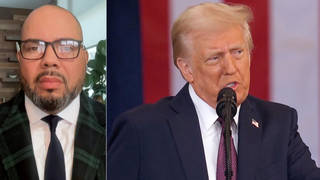

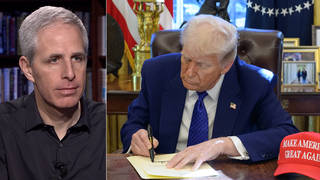
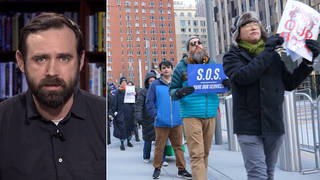

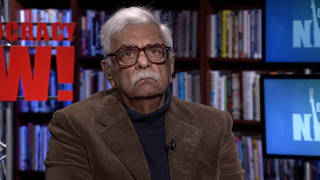
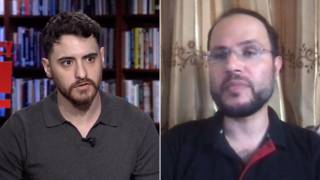
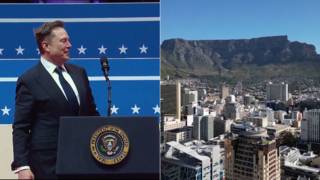


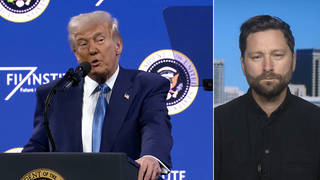
Media Options